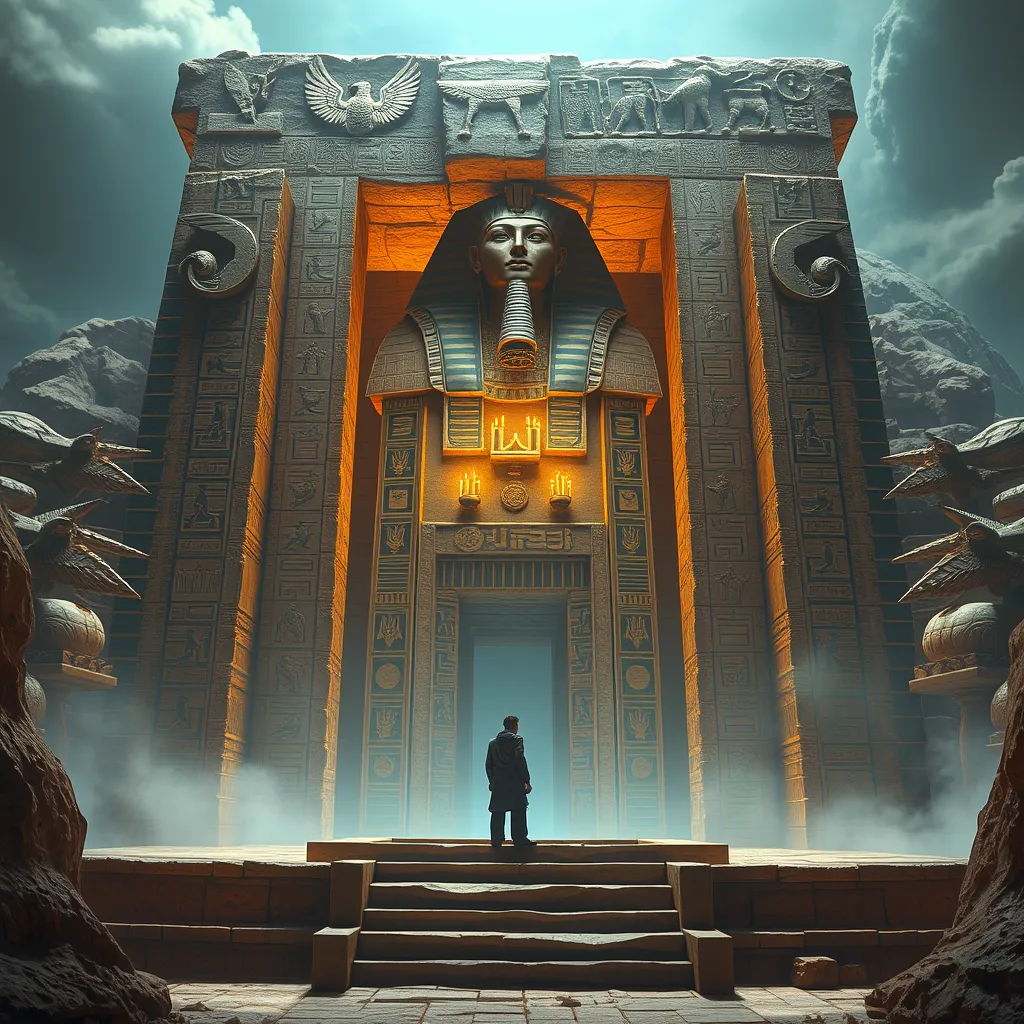The Duat: Unveiling the Secrets of the Beyond
I. Introduction to the Duat
The Duat, a fundamental concept in ancient Egyptian belief, represents the realm of the dead, the underworld, and the journey that souls undertake after death. This mystical space is not merely a destination but a complex landscape infused with rich symbolism, where the fate of the deceased is decided. The Duat is significant as it reflects the ancient Egyptians’ understanding of life, death, and the afterlife, showcasing their deeply held beliefs in immortality and divine judgment.
II. Historical Context of the Duat
The origins of the concept of the Duat can be traced back to some of the earliest Egyptian texts, including the Pyramid Texts, which date back to the Old Kingdom (c. 2686–2181 BCE). These texts outline the journey of the deceased and the challenges faced within the Duat, establishing it as a central theme in funerary practices.
Throughout different dynasties, the understanding and depiction of the Duat evolved. For example, during the Middle Kingdom (c. 2055–1650 BCE), the Coffin Texts expanded on the mythological narratives associated with the Duat, providing more elaborate descriptions of the afterlife journey. By the New Kingdom (c. 1550–1070 BCE), the Book of the Dead emerged, offering a comprehensive guide for the deceased to navigate the Duat and gain access to eternal life.
III. The Geography of the Duat
The Duat is often depicted as a vast and complex landscape filled with rivers, fields, and mountains. Each element of this geography carries symbolic meanings:
- The Waters of Chaos: Represent the primordial state before creation, symbolizing the challenges the soul must overcome.
- The Field of Reeds: A paradise for the worthy, akin to the Egyptian version of heaven, where souls enjoy eternal bliss.
- The Mountain of Sunrise: Represents rebirth, where the sun god Ra rises each morning, signifying renewal.
Key locations within the Duat include:
- Duamutef: The guardian of the deceased, often depicted as a jackal.
- Ma’at: The principle of truth and order, essential for the soul’s judgment.
- The Hall of Two Truths: The site of the weighing of the heart ceremony, where the deceased’s heart is weighed against the feather of Ma’at.
IV. Deities of the Duat
Numerous gods and goddesses are associated with the Duat, each playing a vital role in the afterlife journey:
- Osiris: The god of the afterlife, judge of the dead, and symbol of resurrection.
- Isis: The goddess of magic and motherhood, known for her protective role over the deceased.
- Anubis: The god of mummification and the guardian of the underworld, overseeing the embalming process and guiding souls.
These deities are not merely figures of worship but essential guides and protectors who facilitate the souls’ transition through the Duat, ensuring their safe passage to the afterlife.
V. The Journey Through the Duat
The journey through the Duat is a perilous one, filled with trials and challenges that the deceased must navigate. Upon death, the soul embarks on a journey that involves:
- Crossing the Waters of Chaos: This initial phase tests the soul’s resolve and readiness to face the challenges ahead.
- Facing the Guardians: Various deities and monstrous beings stand as guardians, demanding passwords and offering trials.
- Weighing of the Heart: The climax of the journey occurs in the Hall of Two Truths, where the heart of the deceased is weighed against the feather of Ma’at. A heart heavier than the feather signifies a life of wrongdoing, leading to eternal damnation, while a lighter heart opens the path to eternal life.
VI. Symbolism and Artifacts Related to the Duat
The Duat is richly depicted in hieroglyphics and texts that provide insights into ancient Egyptian beliefs. Important artifacts include:
- Funerary Texts: Such as the Pyramid Texts and the Book of the Dead, which contain spells and instructions for the deceased.
- Tomb Paintings: Illustrations of the Duat, showcasing scenes of judgment and the afterlife.
- Amulets and Statues: Items placed in tombs to protect the deceased on their journey through the Duat.
These artifacts not only reflect the beliefs held about the Duat but also serve as crucial components of the burial practices aimed at securing a safe passage for the soul.
VII. Modern Interpretations and Influence
The Duat continues to captivate modern culture, inspiring literature, films, and art. Contemporary interpretations often draw on the symbolic meanings associated with the Duat, exploring themes of life, death, and rebirth. Key influences include:
- Literature: Novels and poems reimagining the afterlife, often influenced by Egyptian mythology.
- Film and Television: Productions that incorporate ancient Egyptian themes, depicting the Duat as a mystical and perilous realm.
- Art: Modern artists exploring themes of mortality and the afterlife through the lens of ancient Egyptian symbolism.
Ongoing archaeological research continues to uncover new insights into ancient Egyptian beliefs, with discoveries related to the Duat enhancing our understanding of its significance in their culture.
VIII. Conclusion
The Duat holds a pivotal place in the understanding of ancient Egyptian culture, offering profound insights into their beliefs regarding life, death, and the afterlife. By examining the Duat, we gain a deeper appreciation for the values and traditions that shaped this remarkable civilization. Its enduring legacy in modern society serves as a reminder of humanity’s timeless fascination with the mysteries of existence and the afterlife.




